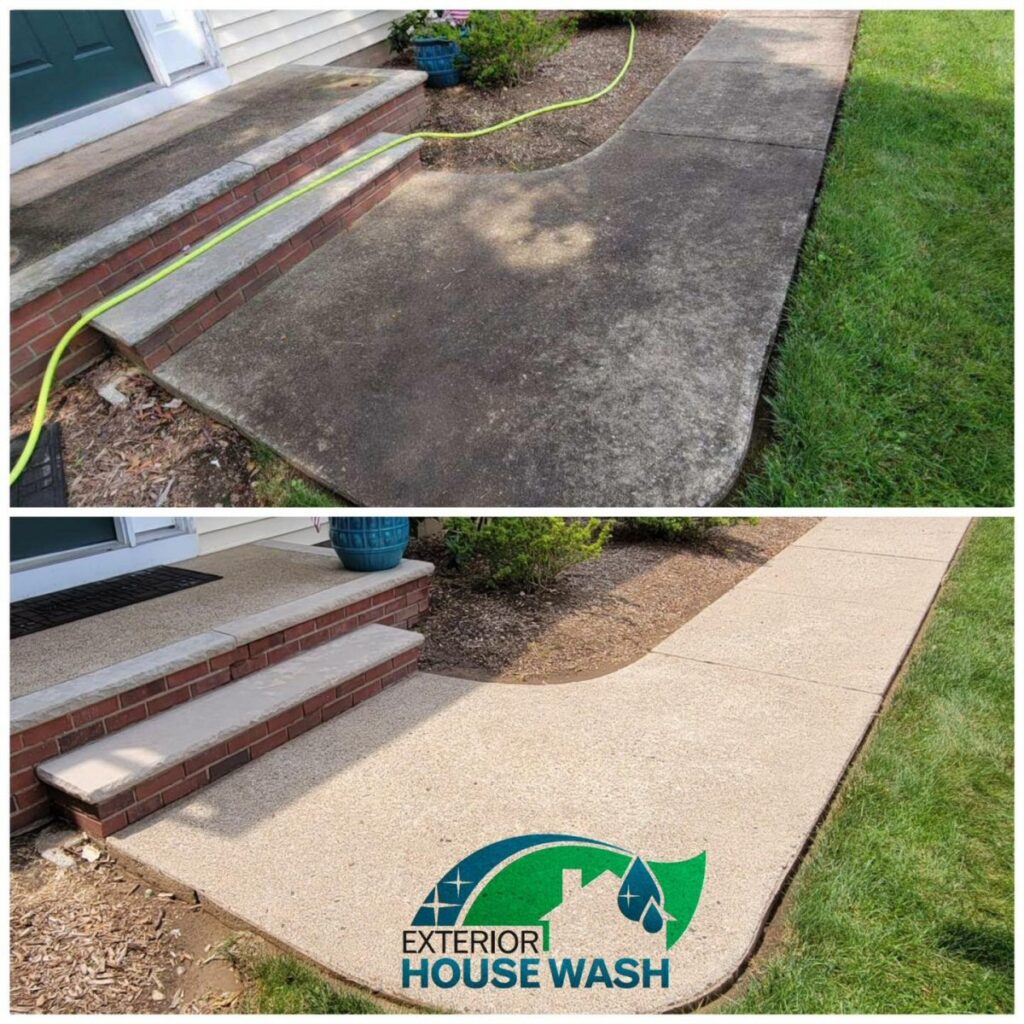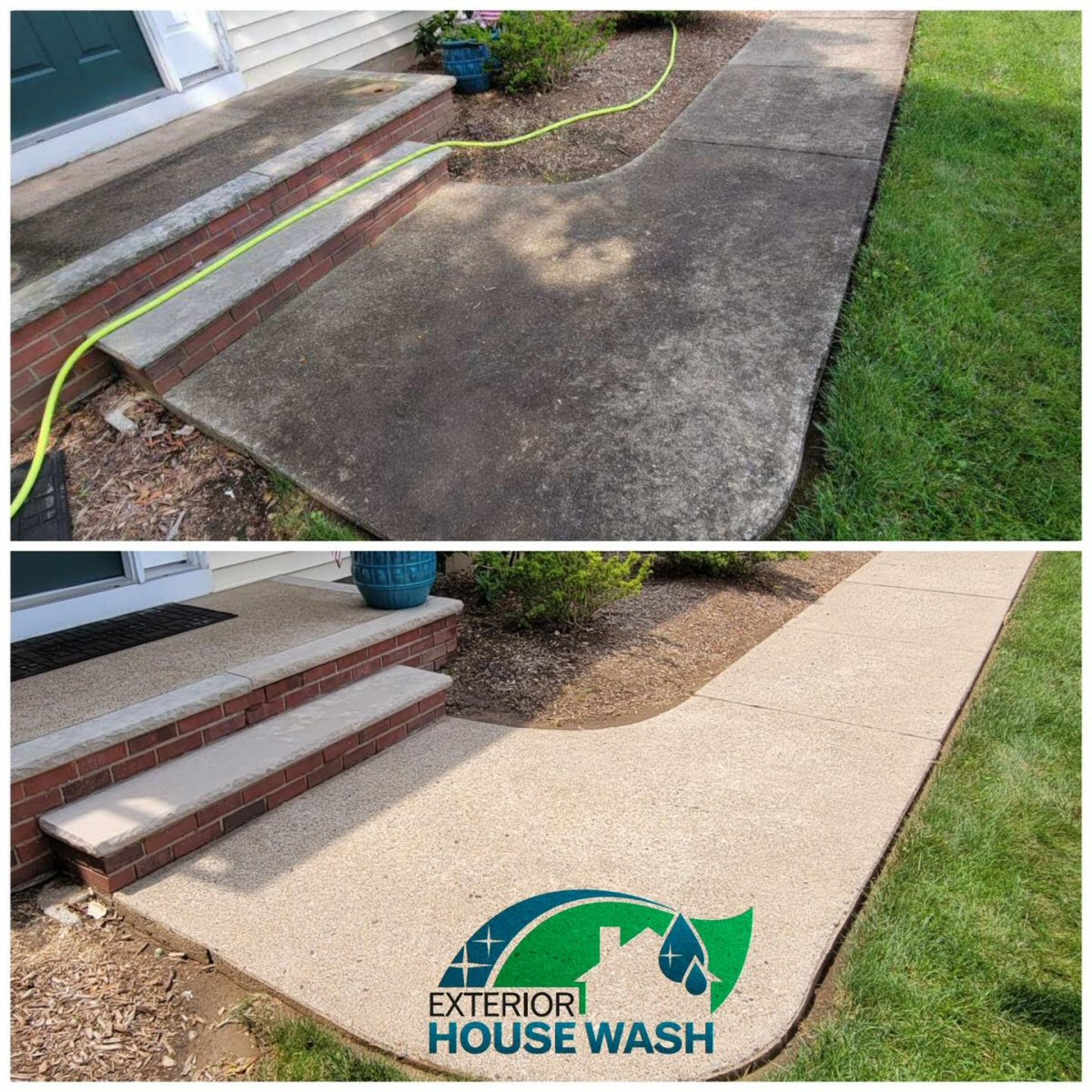A detailed guide to the FAQs about pressure washing
Pressure washing is the process of spraying water or a cleaning solution under high pressure to remove contaminants and dirt from various surfaces and objects. From house facades to concrete walkways, a good pressure washer can quickly remove layers of dirt, mold, mildew, mud, and other contaminants and stains. But how exactly does pressure washing work?
But how exactly does pressure washing with a pressure washer work? What pressure and flow rate do you need? What’s the best way to clean house facades or concrete driveways without damaging them? This guide answers the most frequently asked questions.
Basic equipment for Pressure washing
When you start pressure washing, the first thing you need to know is how to choose the right equipment for the job. Professional pressure washers use industrial machines, but there are also consumer models that are suitable for DIY projects.
PSI and GPM – what do they mean?
The two most important specifications you need to understand are:
- PSI (pounds per square inch) – This measures the water pressure. Typical pressure washers for home use have a pressure between 1300 and 3000 PSI. A higher PSI value increases the cleaning power.
- GPM (gallons per minute) – This measures the water flow rate. Standard flow rates are between 1.5 and 4 GPM. Higher GPM reduces cleaning time.
The right balance between PSI and GPM prevents surface damage while still keeping items clean.
Types of pressure washers
The two main types of pressure washers are:
- Electric – Less powerful but more affordable for homeowners, often 1300 to 1800 PSI.
- Gas – Powered by gas engines that produce a higher output of 2800 PSI and above, with no cord limit.
Electric power washers are good entry-level models for do-it-yourselfers, while gas models offer higher cleaning power for larger jobs. Consider your needs and budget.
Nozzle types and use for Pressure washing
Nozzles for pressure washers are attached to the wand and control the shape, pressure, and water flow. Common types:
- 0° – Narrow pencil spray for precision cleaning of hard surfaces, most surface damage is caused if used incorrectly.
- 15° – Standard all-purpose nozzle, good for siding, patios, and walkways.
- 25° – Softer fan spray – a good choice for more delicate surfaces.
- 40° rotating – Rotating fan spray jet for cleaning large areas of flat floors such as concrete.
Other accessories for high-pressure cleaners
Other practical accessories for pressure washers include:
- Surface cleaners – Rollers that spread the water over large, flat surfaces such as driveways and speed up the cleaning process enormously.
- Extension wands – Allow cleaning of high or hard-to-reach areas and are essential for cleaning a two-story house.
- Detergent attachments – For applying and soaking up cleaning chemicals to loosen dirt – ideal before machine washing.
Safe and correct techniques for pressure washing
Operating pressure washers requires precautions to ensure safety and avoid accidental surface damage. Follow these basic tips when starting a pressure wash:
Wear protective equipment when Pressure washing
Suitable protective equipment includes:
- Sturdy footwear – Protects feet from splashing water and dirt
- Gloves – provide grip and protect the skin
- Eye protection – protects eyes from flying debris
- Hearing protection – Reduces noise, which exceeds 90 db on most models
- Dust mask – Prevents inhalation of airborne bacteria and mold
Test the pressure on a small area first
When cleaning a new surface, test a small, inconspicuous area first before undertaking the entire project. Start with a wide spray angle of the nozzle and a greater distance and adjust the pressure as needed. This will help you determine the most effective and safest settings for each individual surface.
Wash systematically from top to bottom
When cleaning siding, tiles, roofs, or other vertical surfaces, always spray from top to bottom in horizontal passes to prevent dirty water from dripping onto lower surfaces that have already been cleaned, causing further streaks and stains.
Be careful near electrical connections when Pressure washing
Use extreme caution when washing near electrical boxes, outlets, light fixtures, or appliances. Even basic household cleaners create enough water pressure to damage the outlets, which can lead to a dangerous electrical shock or short circuit if not handled properly. Consider covers or contact a professional to clean such areas.
Pressure washing the outside of the house
One of the most popular DIY projects is cleaning the exterior of your home. We’ll show you how to make your home look like new again!
Signs that your home needs pressure washing
Noticeable dirt buildup, streaking, green algae growth or dark spots are signs that it’s time to break out the pressure washer. Homes with trees nearby may need to be cleaned every 2 or 3 years. Without trees or other environmental factors, a 5-year interval between cleanings is common.
What areas of your home can be cleaned with the pressure washer?
The following areas of the home can be cleaned with the pressure washer:
- Wood or vinyl siding
- Concrete and brick walkways
- Wooden terraces and fences
- Stucco, stone, or artificial stone cladding
- Roof shingles
- Painted garage doors and cladding
Check your home’s materials first, as very porous masonry can be damaged if not treated carefully.
DIY vs. professional power washing
You can rent or buy a pressure washer and do the house cleaning yourself to save money, but there are advantages to hiring a professional service provider:
- Better equipment with higher water pressure for better cleaning
- Knowledge of the optimal PSI and GPM values for each surface
- Perfected techniques from cleaning hundreds of homes
- The ability to safely clean difficult areas on the second floor or at high altitude
- Availability of other services such as sealing, painting, or gutter cleaning
Weigh the pros and cons of the two options for your home’s situation.
How much does pressure washing a house cost?
The cost of self-performed pressure washing includes the purchase or rental of equipment, supplies, and cleaning solutions, which typically total $50 to $200. Hiring a professional cleaning company costs an average of $200 to $500, depending on the size of the home, with the work being done much faster for larger homes (1 to 4 homes).
Pressure washing for different types of surfaces
Houses are far from the only surface you can renew with a good pressure washer! Let’s take a look at how you can treat other common outdoor surfaces:
Effective cleaning solutions per surface
Pre-treatment of surfaces with cleaning agents increases the cleaning effect and reduces the load on your pressure washer:
- Degreasing agents are good for oil stains on concrete
- Mold and mildew removers help clean surfaces that face plants, such as siding
- Bleach or hydrogen peroxide solutions left on a surface for at least 5 minutes will dissolve stains
- Avoid harsh chemicals on more delicate materials such as wood, roof shingles, or vinyl
Rinse surfaces thoroughly after applying cleaning solutions before machine washing.
Specialized techniques for each type of surface
Each material requires a slightly different treatment to avoid damage when pressure washing:
- Wood – Use wider spray nozzles, spray vertically, and test frequently on inconspicuous areas
- Brick – Moderate pressure with angled cleaning works best
- Stucco – Gentle cleaning is essential as water can penetrate behind the surface
- Roof shingles – Clean only the exterior mold and limit time on the roof to prevent water from pooling under the shingles or roofing material
Consider hiring a professional for difficult or easily damaged surfaces.
Sealing concrete after pressure washing
Once the dirt is removed, applying a concrete sealer will help prevent rapid re-staining and make future pressure washing easier. Concrete sealers fill the pores, allowing dirt, oil, and moisture to remain on the surface instead of penetrating it. Types such as acrylic, epoxy, or polyurethane work well for driveways. Always allow the concrete to dry completely before sealing.
Operating and troubleshooting pressure washers
As with any machine, problems can occur with pressure washers. The following explains proper operation, storage, winterization and possible troubleshooting:
Storing pressure washers in winter
Special measures are required for washing machines with gas engines if they are stored over the winter or for longer periods of time:
- Run the engine dry or treat the gasoline with stabilizers to prevent it from sticking
- Disconnect the spark plug cable and remove the battery
- Drain water from all hoses, pumps, and nozzles
- Use pump protectant to protect the internal parts of the water pump from corrosion
Consult your specific washing machine manual as recommendations vary.
Why won’t my pressure washer start?
For gas-powered pressure washers, several systems must be working properly for it to start:
- Make sure the machine is properly throttled
- Check that sufficient fresh fuel is entering the carburetor
- Check the correct spark plug gap for the ignition
- Check that the battery is sufficiently charged to activate the starter motor
- Ensure that the engine and pump are lubricated with oil
If the machine does not start, read the troubleshooting steps in the operating instructions.
Troubleshooting low-pressure or on-off cycle
If an electric or gas-powered pressure washer is working but only delivers low water pressure or cycles on and off, the following problems can often be rectified:
- Clogged or worn nozzles – Replace nozzles or clean with wire
- Leaks in hoses or connections – Seal all connections tightly
- Defective pressure switches or sensors – may indicate worn internal pump parts
- Debris clogging the water inlet – Clean the inlet filters
- Not enough GPM to support PSI rating – Ensure the unit is supplied with sufficient water
Check pressure washer operation and make repairs before assuming machine failure.
Remove clogged nozzles from pressure washers
Blockages in the nozzles and nozzle holders eventually occur due to limescale deposits or dirt sucked in. Fortunately, most blockages can be easily removed:
- Insert a wire or needle from a pressure washer through the nozzle opening
- Use a toothpick to remove stuck parts
- Drill out stuck mineral deposits with a drill bit
- Soaking overnight in CLR or limescale remover chemicals
Avoid using metal tools on softer brass nozzles, which can be easily damaged. Replace plastic nozzles regularly as they will wear out over time.
Conclusion
Although pressure washers seem fairly straightforward, there are many important nuances when choosing equipment and techniques for excellent cleaning results without damaging surfaces. Now that the most pressing questions about Pressure washing have been answered, you have the knowledge to handle basic house and driveway cleaning tasks yourself.
For large homes or difficult surfaces like pool decks and wood restoration, a modest investment in a professional residential cleaning service usually delivers better results than DIY methods. Spending a little more money upfront will save you time, avoid potential mistakes, and often get you a multi-year warranty on the results if done properly.
Are you ready to scrub? Then grab the pressure washer now, carefully test some dirt samples, and unleash the cleaning power! Just beware of spending an unexpected number of hours meticulously blasting every surface in sight once you realize how much fun it can be. Good luck!
Call House Wash PA at 484-881-2713 today!
The post A detailed guide to the FAQs about pressure washing first appeared on The Marketing Tutor.
The Article A Detailed Guide To The FAQs About Pressure Washing First Appeared ON
: https://ad4sc.com
The Article A Detailed Guide To The FAQs About Pressure Washing was found on https://limitsofstrategy.com



